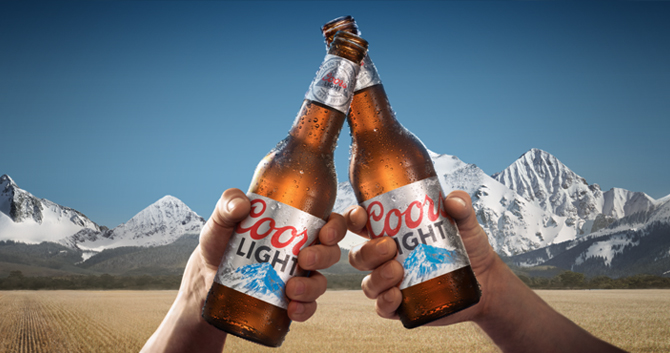
Worldwide sales of Molson Coors offerings in the first quarter declined 1.2 percent, to $2.3 billion, the company reported today.
Molson Coors — whose brands include Coors Light, Coors Banquet and Miller Lite, among others — reported a 4.7 percent decline in worldwide brand volumes, to 18.2 million hectoliters. Nevertheless, the company’s net sales per hectoliter increased 2.3 percent through March 31.
Molson Coors president and CEO Mark Hunter called the Q1 results “solid” and cited the company’s improved top-line performance while “protecting the bottom line.”
In the U.S., Molson Coors reported Q1 declines in depletions (sales-to-retailers) and shipments (sales-to-wholesalers) of 3.8 percent and 2.7 percent, respectively. The company said it expects depletions and shipments to converge by the end of the year.
Those numbers follow a soft first quarter in 2018, when Molson Coors’ U.S. business unit, MillerCoors, reported a 3.8 percent decline in depletions and a 6.7 percent decline in shipments. At the time, the company said it under-shipped about 450,000 hectoliters of beer due to the botched implementation of a new ordering system at its brewery in Golden, Colorado.
Despite declines in shipments and depletions in Q1 2019, net sales in the U.S. increased 0.7 percent, to nearly $1.7 billion, due to higher pricing. MillerCoors also reported that net sales per hectoliter increased 3.7 percent during the period.
“While only the first and smallest of our quarters, I am encouraged by the meaningful growth of net sales revenue in the U.S.,” Hunter said in a press release, “led by the increasingly strong performance of Miller Lite, which held total beer industry share, and an improved performance of Coors Light in our largest and most profitable market, as well as strong U.S. retailer placements for our upweighted innovation program.”
Outside of the U.S., Molson Coors reported significant declines in net sales in Canada (-8 percent), Europe (-3 percent) and other international markets (-16.7 percent) in Q1.

During a call with investors and analysts, Hunter touted “strong double-digit” first quarter growth of import labels Peroni and Sol as well as Henry’s Hard Sparkling and Arnold Palmer Spiked Half and Half. Blue Moon, which is now sold in 20 international markets, also grew sales double digits in Canada and Europe.
The Blue Moon brand will receive more attention from the company in 2019. MillerCoors CEO Gavin Hattersley said the company plans to double its media spending behind the brand over the next two quarters as the company attempts to make the brand the “No.1 taphandle in America.” He added that the company will ramp up its efforts around the Kentucky Derby, which counts Blue Moon as its official craft beer sponsor.
According to Hunter, Molson Coors is expecting to secure 180,000 retail placements throughout the year for new innovations such as Saint Archer Gold, Cape Line canned cocktails and Sol Chelada as well as second-year products.
“We’re already developing our portfolio to have more stretch and breadth,” he said.
As for Truss, Molson Coors’ joint venture with Canadian cannabis company Hexo, Molson Coors Canada president and CEO Frederic Landtmeters said the company would be ready to release cannabis-infused beverages in Canada when they become legal on October 17.
Both Landtmeters and Hunter said they have seen no cause and effect between recreational cannabis use and negative beer sales trends.
“There is no evidence, no data based on the last five months of cannabis sales that show us an impact there,” Landtmeters said.

Meanwhile, Hattersley said MillerCoors would delay the implementation of its new ordering system at its production facility in Albany, Georgia, until after the summer selling season and to avoid a repeat of what happened at its Golden brewery. He added that the company has completed the rollout of that system at its facilities in Trenton, Ohio; Fort Worth, Texas; and Milwaukee, Wisconsin.
“Given our learnings from Golden, we decided to exercise an abundance of caution with Albany so we don’t disrupt the network given the transition,” he said.
Full implementation of the new system is expected to be completed by the end of the year, Hattersley said.
Asked about the probability of achieving the company’s full-year guidance, Hunter said the company has not adjusted its projections.
“The first quarter came in pretty much in line with our expectations,” he said. “If you look at our track record over the last three or four years, we deliver on the commitments we put into the marketplace.”
Wall Street responded negatively to the results as the stock price declined more than 7 percent, to $59.35, on the day.
